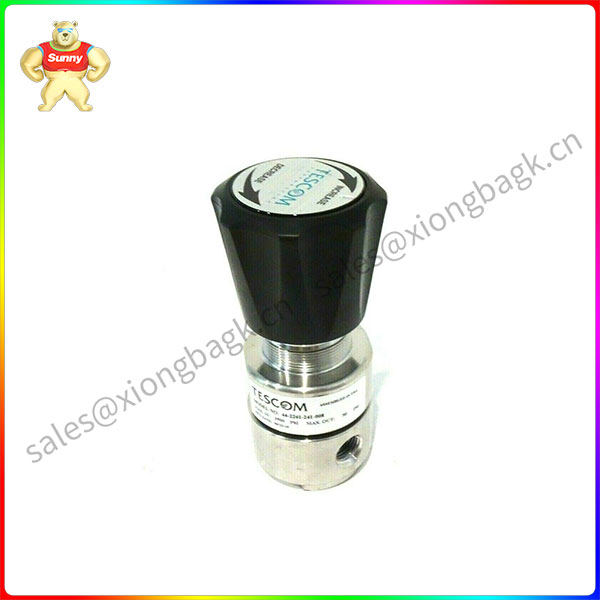Drug packaging is an important link to ensure the safety, effectiveness and stability of drugs. For example, packaging processes implemented in clean room conditions have very high hygiene, product safety and reliability requirements. With decades of experience serving packaging equipment and pharmaceutical manufacturers, we understand the challenges in these areas. Our anti-interference health sensors meet the highest levels of protection and certification standards and have been tested in the toughest environments for decades.
Lloyd’s sensor technology to meet the requirements of different regions
Bottle positioning: Use a mirror-reflecting photoelectric sensor with a hygienic design
In order to optimize speed control during transportation, the sensor must reliably detect transparent or non-transparent glass bottles on the delivery line. Even tiny gaps must be detected, and hygiene requirements in sterile systems are very high.
TESCOM 44-2261-241 The PRK 53CL1.T3 mirror reflective photoelectric sensor with a small laser spot and the MTKS stainless steel mirror enable high precision detection and bottle positioning. Compact sensors can be easily integrated in confined Spaces. Sensors and mirrors have a hygienic design.
Bottle inspection: Use fiber optic sensors for compact Spaces & diffuse reflection sensors for precise background suppression
After the vial enters the packaging equipment, the container needs to be transported in a confined space at high speed and at a very small spacing. Due to space constraints, it is necessary to use exceptionally small sensors while being able to easily integrate them into the machine.
KF plastic fiber or GF glass fiber with different beam exits and LV 463 amplifiers can be used as a solution for bottle inspection. Glass fiber is particularly suitable for conditions in high-temperature environments.
When the medicine bottle is successfully fed into the downstream machine by the screw conveyor, the spiral rotation requires the sensor to achieve precise background suppression when detecting the medicine bottle.
With the HT55C.V diffuse reflection sensor, the integrated special V-shaped optics enable very precise background suppression while also reliably detecting partially transparent objects.
Tube filling and sealing: Use compact color marker sensors
In tube fillers and sealers, the tube is filled with a paste product, and the important thing in this process is that the sensor is precisely aligned with the plastic tube after filling so that the bending of the tube is pressed in the correct position. Space in these machines is usually limited.
The compact KRT 3C color scale sensor saves a lot of installation space. With a short response time of 50 μs, the device can detect contrasting marks of different colors very precisely, even for circular objects.
Bottle caps: Use a stainless steel housing trough sensor with a laser

TESCOM 44-2261-241
After filling the vial, it is usually necessary to feed small parts such as caps, lock rings or drug delivery AIDS into the machine via a vibrating conveyor. Special optimised sensors should be used when detecting small parts. The laser GS 08B or GSL 08B stainless steel case slot sensor is very easy to integrate and reliably detects small objects and small gaps.
Blister packaging: Use color code sensors optimized for seam inspection & ultrasonic sensors for accurate ranging
In order to ensure a smooth process during blister sealing, the sensor needs to reliably detect the joint on the formed film and must interrupt the opening of the joint during the subsequent process. The KRT 3C, KRT 18B or KRT 55C color scale sensor is optimized for seam inspection. The tape and background color can be adjusted using the Teach button.
Blister molding plastic film is supplied in large roll form. To ensure a uniform spread, the drum is usually driven by a motor. This requires the sensor to continuously send out a distance signal to determine the diameter. The DMU 318 or DMU 418 ultrasonic sensor has been developed specifically for accurate distance measurement, providing an analog signal that can be used as a drum diameter reference.
TESCOM 44-2261-241 Blister pack into box: Using a fixed QR code reader & fluorescent sensor based on camera principle
Ensuring that the correct packaging inserts are placed in the box is an important key point in the folding box. For this purpose, it is essential to read and compare the bar codes on the folding boxes and packaging plug-ins in the process. Two camera-based DCR 200i stationary QR code readers are used to ensure that the packaging plug-in is allocated to the folding box. The sensor can be reliably decoded (data matrix code or Pharmacode code).
When packing the pill blister to the folding box, the packaging plug-in needs to be packed. Because the packaging plug-in is made of paper material, it can be reliably detected with the help of fluorescent sensors. The LRT 8 fluorescence sensor detects fluorescent materials by means of ultraviolet illumination. Due to its small design, the device is very easy to integrate. These sensors can support different detection ranges, spot sizes and filters, making them very flexible to use.
Security protection at the entrance and exit of the packaging process: use security door locks with RFID bar code actuators
Safety switches with safety locks must be used to monitor safety doors of fast-running machines in pharmaceutical packaging to prevent accidental access and to stop the process only at designated points. The accessibility of machines in the process should not be affected.
The L250 and L300 safety locks keep the safety door locked until an electrical release signal is issued by the control unit. Thanks to the use of RFID barcode actuators, it provides the best protection against illegal operations. Optional emergency stop and command buttons facilitate setting up the entire safety function.
 中文版
中文版



